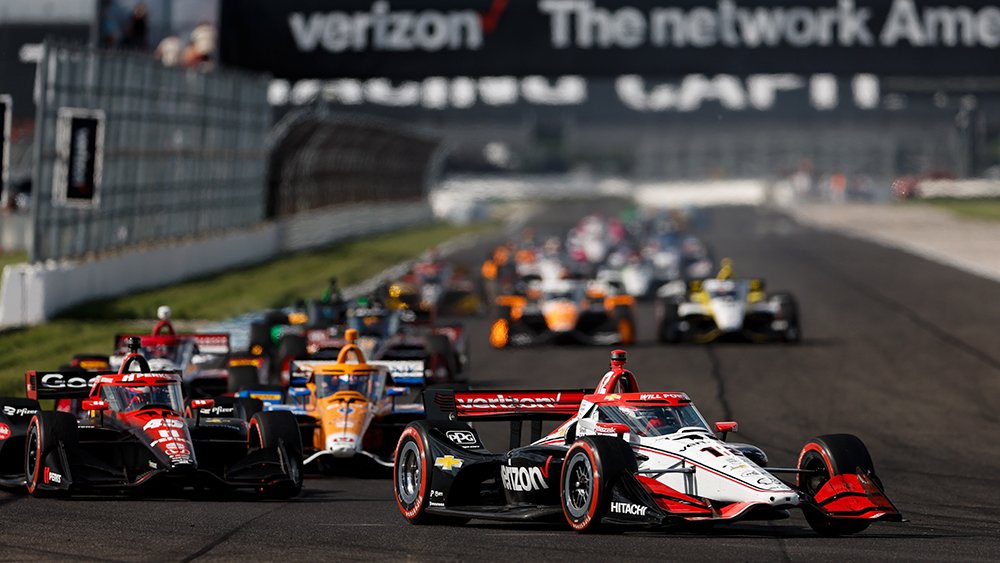The Impact of Hybrid Technology, Tire Choices, and Conservative Strategies on Overtaking in IndyCar: Is There Hope for Change?
The 2025 IndyCar season has kicked off with a surprising trend: four races, 335 laps, and just one lead change. This lack of overtaking has raised questions about the excitement that once defined this motorsport, known for its competitive edge and thrilling finishes. With Alex Palou dominating the series—having won four out of the first five races—fans are left wondering what has changed in IndyCar racing and if anything can be done to reignite the spark.
The Weight of Hybrid Technology
One of the primary contributors to the current situation is the introduction of hybrid systems, specifically the Energy Recovery System (ERS) that was rolled out in 2024. This new technology added an extra 100 pounds (approximately 45 kilograms) to the already hefty Dallara DW12 chassis, which now weighs in at 1,785 pounds (810 kilograms) without a driver or fuel. To put this into perspective, imagine running a marathon while carrying a heavy bag of cement on your back.
This additional weight has significantly affected the handling characteristics of the cars. Drivers have noted a loss of agility: "Previously, you could drive on the edge, making quick corrections. Now, any slip is slow and costly," explains Kyle Kirkwood from Andretti Autosport.
Moreover, the steering feedback has diminished. As Alexander Rossi from Ed Carpenter Racing puts it, "The car has become unresponsive and challenging to maneuver. You can’t even complete a full turn of the steering wheel if you want to." This lack of responsiveness makes it difficult for drivers to push their limits and engage in overtaking maneuvers.
Tire Choices: A Miscalculation
Another factor contributing to the lack of overtaking is the tire strategy employed this season. IndyCar asked Firestone to develop more aggressive tires for the 2025 season, aiming to create a scenario where faster degradation would allow for daring strategies. However, the results have been far from what was anticipated.
In street circuits like Long Beach, the alternate tires, known as "reds," have been deemed "suicidal." Teams are opting to switch them out as quickly as possible, eliminating the tactical variations that could lead to exciting racing. On permanent circuits such as Barber, where tire degradation is not as severe, all teams tend to adopt the same three-stop strategy. The outcome? A lack of variation leading to unexciting races.
Kirkwood summarizes the situation succinctly: "If everyone is following the same plan, overtaking becomes virtually impossible."
The Absence of Incidents: A Compounding Problem
The current state of racing has also been hampered by a lack of incidents on the track. Traditionally, yellow flags and restarts would shake up the grid and create opportunities for overtaking. However, in 2025, the reliability of the hybrid systems and the safe handling characteristics of the cars have minimized on-track incidents. Remarkably, only one yellow flag has been displayed over 420 laps leading up to the Indianapolis Grand Prix.
Is There a Solution on the Horizon?
In the short term, options for improvement are limited.
Tire Review: Unfortunately, Firestone does not have the 2024 tire compounds available in stock for immediate use, meaning teams will have to work with the current tires for the foreseeable future.
- Weight Reduction: The hybrid technology is here to stay, so reducing the weight of the cars may not be feasible.
However, there is a glimmer of hope. The upcoming oval races in St. Louis and Iowa could provide the kind of racing dynamics that have been missing. Oval tracks generally allow for drafting and strategic pit stops, which can reignite the competitive spirit and lead to more exciting racing scenarios.
Additionally, while Palou has been a strong competitor, his dominance stems from a rather smooth driving style. If other drivers can adapt and find ways to challenge his approach, the competition could tighten, leading to more thrilling races.
The Verdict on IndyCar’s Direction
As it stands, the IndyCar series appears to have traded some of its exhilarating spectacle for a focus on sustainability and hybrid technology. Striking the right balance between these two aspects is crucial for the future of the series. Fans are eager to see if the upcoming races will bring back the exhilarating action they expect.
As Alexander Rossi aptly puts it, "We are driving on the limit, but it’s a different limit now." The challenge ahead for IndyCar is to navigate the complexities of modern racing while ensuring that the thrills and excitement that fans have come to love are not sacrificed in the process.
For those looking to catch the action, stay tuned to networks like TV Cultura, ESPN4, and Disney+, where the latest races will be broadcast. It will be interesting to see if the magic of competitive racing returns in the coming events.
